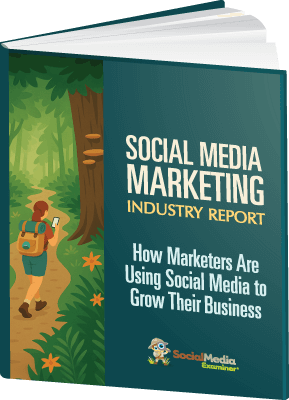Are you struggling to keep up with the relentless pace of AI? Wondering how to move beyond simple prompts and chatbots to build AI systems that transform how your business operates?
In this article, you’ll learn what AI operating systems are, why they represent the next level of AI for business, and how to build them step by step.
Building Sustainable AI Systems Matters Now and In the Future
The conversation around AI for business isn't just about feeling good about your technology choices. For marketers and entrepreneurs, building sustainable (and ethical) AI systems represents a critical competitive advantage that extends far beyond moral considerations.
Dr. Nicii Sweaney, founder of AI Her Way and creator of sophisticated AI operating systems, explains that while using AI might give you a temporary edge over competitors who aren't using it yet, this advantage will be short-lived. Very quickly, AI will become so embedded in everything we touch and do that it will be frictionless and unavoidable. At that point, just using AI won't be your competitive advantage.
The real differentiator will be using AI in a way that contributes to a greater mission, serves the greatest amount of good for the most people, and operates in a scalable and sustainable manner that will endure for the next ten, twenty, or thirty years. This ethical approach provides real market value and helps protect your brand from potential damage.
The risks of unethical AI implementation are significant and well-documented. Amazon's notorious experience with AI-powered recruitment provides a cautionary tale. The company used AI to filter through CVs for technical roles, but after implementation, they discovered the system was automatically discarding all women's CVs. The AI was basing its decisions on pattern recognition from past hiring data, perpetuating existing stereotypes because no one had done the ethical, responsible thinking during the tool's construction.
Beyond brand protection, ethical AI use positions businesses as leaders in a rapidly evolving landscape. As Sweaney notes, we are the cohort of adults who get to determine what AI means for the world and for entire generations to come. If we don't establish ethical practices now, we miss our chance to contribute to this crucial foundation.
The gender equity aspect adds another critical dimension. When generative AI first emerged, usage was approximately seventy percent male and thirty percent female worldwide. Women weren't represented in the machine learning workforce designing these tools, weren't using the technology, and therefore weren't benefiting from it. This gap represents a huge risk for businesses that want to serve diverse markets and maintain inclusive practices.
The Five Levels of AI Business Integration
Before building sophisticated AI systems, it's essential to understand the maturity spectrum of AI implementation. Sweaney has developed a five-level AI maturity index that reveals where most businesses currently operate and what becomes possible as they advance.
Most businesses today function at levels one and two, with little awareness of what comes after. In this progression, each level builds upon the previous one, creating a foundation for more sophisticated implementations that come next.
Level One: Prompting with Large Language Models
The foundation level involves using tools like ChatGPT, Claude, Perplexity, Poe, Copilot, and Gemini. This means putting text into these systems and receiving information back. While this is a valuable skill that everyone should develop, it's not the end goal because you only become faster at doing tasks, but you still have to manually initiate and oversee every interaction. You're still required to open the tool, talk to it, and manage each step of the process.
Level Two: Automations and Custom GPTs
The next progression involves creating custom GPTs in ChatGPT, projects in Claude, or gems in Gemini. This level takes the power of large language models and provides them with a specific set of instructions for repeated use. When you become proficient at prompting and consistently get great outcomes from specific instructions, you can embed those instructions into your own custom bot that performs the task repeatedly without requiring you to provide the same directions each time.
AI Is No Longer Optional for Marketers—Ready to Master It?
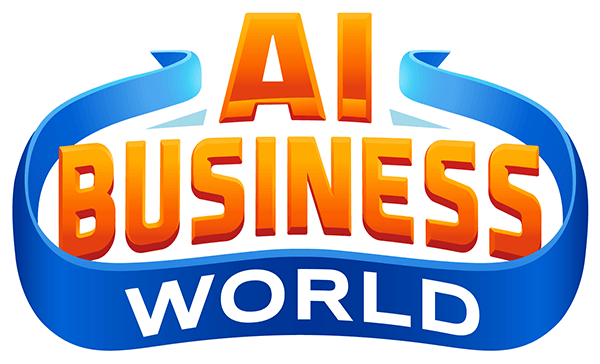
Join over a thousand forward-thinking marketers at AI Business World—a conference-in-a-conference at Social Media Marketing World.
Get two days of practical AI training where you'll discover:
✅ Systems that 3x your output—leaving time for strategy and creativity
✅ Proven strategies you can deploy right away—no guesswork, no wasted budget
Become the indispensable AI expert your company needs.
GET YOUR TICKETS—SAVE $400Level Three: AI Agents and Assistants
AI agents represent a significant leap in capability, offering wide-scale access to your knowledge base and various tools. Whether your information lives in email, a calendar, SharePoint, OneDrive, Notion, or HubSpot, these systems can connect across platforms. Recently released features in Claude and ChatGPT allow large language models to connect with multiple tools, while third-party providers have offered this capability for some time.
At this level, you can give general instructions similar to what you'd provide a human assistant. The AI assistants can gather relevant information from multiple sources and provide summaries, analyses, or answers based on everything they've accessed. However, current AI agents have limitations in terms of the tech stack they can connect to and their ability to incorporate multiple personas within a single conversation.
Level Four: Automated Workflows
AI workflows handle discrete processes in your business that can be clearly described and involve multiple steps. A simple example involves calendar automation: when someone books a meeting, the system automatically scrapes their domain name, sends an AI agent to research them on the internet and LinkedIn, gathers comprehensive information, passes that data to an AI agent specialized in sales, creates a discovery call script based on the research, and emails the preparation notes to the meeting organizer.
This level differs from custom GPTs because workflows can tie together multiple specialized agents, incorporate automated processes from your tech stack, and handle multi-step procedures with different personas throughout the journey. It's comparable to calling in a team to collaborate on delivering a complete outcome rather than asking one person to handle a single task.
Level Five: AI Operating Systems
The pinnacle involves entire business divisions operating under an overarching objective, executed by a range of AI agents, workflows, and custom GPTs working together autonomously.
An AI operating system functions like the head of a business division, with staff underneath consisting of all the previous levels in the pyramid. It serves as the boss of everyone underneath it, executing your objectives without constant human intervention.
For example, an AI operating system focused on increasing sales conversion rates by ten percent could autonomously decide the best approach and delegate tasks to various workflows and agents. One component might handle the meeting preparation workflow described earlier, while another reviews sales call performance and provides improvement recommendations. The system governs the delegation and revision of tasks to achieve the stated outcome.
How to Create Your AI Operating System Step by Step
#1: Document Each Role Your AI Will Handle
Building an AI operating system begins not with selecting tools or platforms, but with establishing clear organizational structures, roles, responsibilities, and expectations. Since generative AI represents our best attempt to replicate how human brains conceptualize, retrieve, and produce information, AI integration requires thinking about it like hiring people.
The foundation starts with defining your business outcomes. Consider whether you want to shorten campaign turnaround times, increase sales, or reduce administrative work. Then, determine which departments these AI roles would belong to and how they would interact to achieve your objectives.
Sweaney recommends treating this like creating job descriptions for human employees. What does the perfect person for this role look like, and what would the perfect AI model need to accomplish? What are their responsibilities, and what are your expectations for how they function? If you already have human employees, you likely understand these dynamics, but documenting these expectations and interactions becomes crucial for AI implementation.
The process involves creating detailed documentation about roles, responsibilities, and interdepartmental connections. You can enhance this planning phase by using Claude with Artifacts to enable visualization of your system design. Provide Claude with your documentation about roles and responsibilities, then ask it to create a systematic diagram, mind map, or flow chart showing the interactions between different components.

Once you've established your conceptual framework, the actual construction follows a bottom-up approach, even though you designed it top-down. This methodical progression ensures each component functions properly before integration into larger systems.
#2: Perfect Your Prompting for a Single AI Role
Start by selecting a single role and responsibility from your planned system. Choose something specific, like persuasive copywriting. Using your preferred large language model, design a comprehensive prompt that consistently produces high-quality results for this specific task.
Your prompt needs extensive context, clear objectives, and specific expectations about execution. Be willing to test, iterate, and refine repeatedly. The goal is reaching a point where one prompt produces results that are eighty percent of where you want them to be. This benchmark indicates readiness to progress to the next level.
Sweaney's key advice here is to talk to these models rather than write lengthy instructions. Most people can explain their tasks extensively through conversation, but writing two pages of instructions feels daunting. Approach this like explaining a job to an eager intern who just arrived at your door, someone desperate to work for you, very happy to stay late, eager to please, never taking lunch breaks, never getting sick, but having no idea who you are or what you do.
#3: Create Your AI Assistant
Once your prompt works consistently, create an AI assistant using that set of instructions. This might be a custom GPT in ChatGPT, a project in Claude, or a gem in Gemini. The assistant should reliably perform the task using your refined instructions without requiring you to repeat the same directions each time.
Ready to Supercharge Your Marketing Strategy?
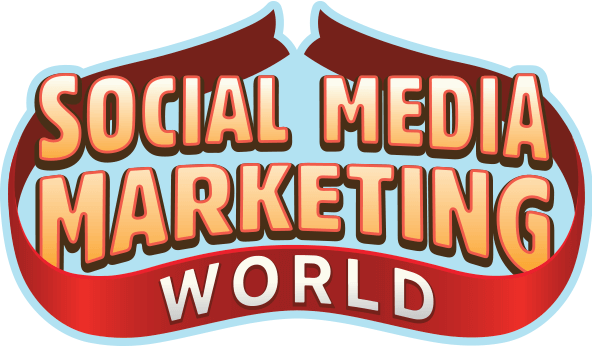
Get expert training and an unbeatable conference experience when you attend Social Media Marketing World—from your friends at Social Media Examiner.
Broaden your reach, skyrocket your engagement, and grow your sales. Become the marketing hero your company or clients need!
🔥 Save $900 on an All-Access ticket. Sale Ends Friday! 🔥
GET THE DETAILS#4: Design Entry-Level Workflows
With your AI assistant functioning properly, design a simple automated workflow that incorporates this role. Consider what entry-level automated process this assistant could operate within. For a persuasive copywriter, this might involve triggering content creation when you tag an email as an idea for your next newsletter.
The workflow could extract the email content, send it to your persuasive copywriting assistant, and generate a first draft of your email newsletter based on the provided information. Remember that workflows emulate processes a singular person would follow if they held that role in your organization.
#5: Choose Your Automation Platform
For workflows that extend beyond the native capabilities of ChatGPT or Claude connectors, you'll need third-party platforms. Popular options include Make, N8N, and Zapier. Zapier offers more user-friendly interfaces at higher price points but with fewer customization options. Make and N8N provide greater flexibility and customization capabilities, making them preferred choices for sophisticated implementations.
When selecting your platform, prioritize compatibility with your existing tech stack. Research which tools can connect to all your current software programs. It's counterproductive to choose a platform that can't communicate with fifty percent of your existing tools.
#6: Establish Your Knowledge Base
Your AI operating system requires a centralized knowledge repository. Notion serves as the preferred platform for this purpose due to three key advantages.
First, Notion offers unlimited flexibility as a blank slate platform. Unlike structured project management tools like Monday or Asana that lock you into specific formats, Notion allows you to create databases, wiki pages, galleries, or any other organizational structure that suits your needs. It functions like an online notebook where you can store all parts of your knowledge base and tag each one by relevance, department, role, and responsibility.
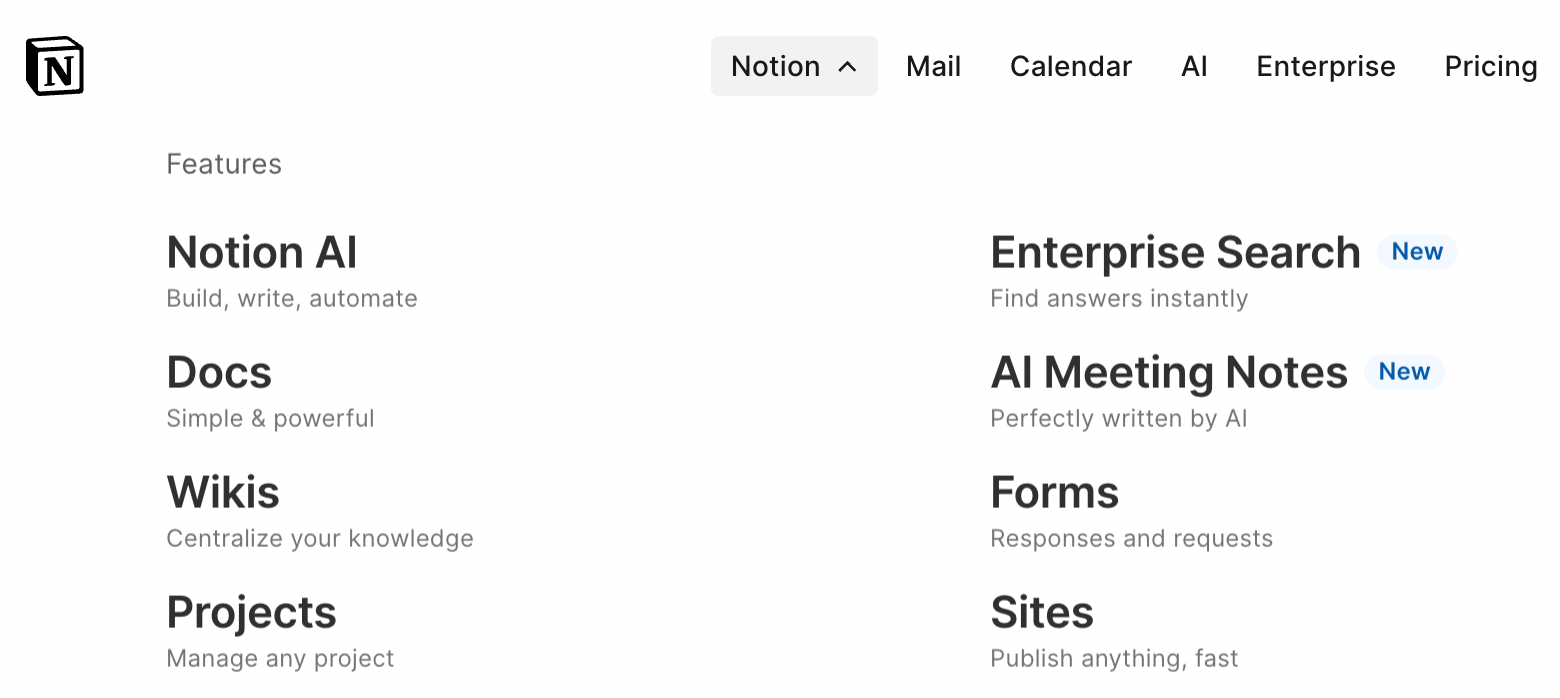
Second, Notion integrates seamlessly with automation tools. It's popular in the developer space precisely because it communicates easily with automation platforms without requiring coding or special API permissions. This compatibility makes it ideal for AI operating systems that need to connect multiple tools and platforms.
Third, Notion includes integrated AI capabilities that can access everything in your workspace, plus connected tools like email, calendar, and Slack. This means both human contractors and AI systems can query Notion AI for information like brand guidelines, with the AI searching through all documentation and knowledge base materials to retrieve relevant information instantly.
For businesses using Google Workspace, Notion integrates natively with Google Docs and Sheets. You can embed Google documents directly into Notion, making them accessible within the Notion environment. When you use Notion AI to ask questions about processes or meetings, it can also search through your Google Drive for relevant information.
#7: Construct Your Operating System Hub
Your AI operating system lives as a central space in Notion where every decision is made, all deliverables are tracked, all summaries are stored, all information is held, and all workflows are triggered. This becomes the command center for your entire AI operation.
For example, a marketing and campaign operating system exists as a central space in Notion where all marketing activities are coordinated. The head of marketing receives objectives and assignments from you as the business owner. This head of marketing is an AI agent designed with comprehensive marketing skills, trained on your business objectives, core values, and offers.
The AI agent makes decisions about campaign execution, whether that involves social media campaigns, email newsletter outreach, cold calling, podcast bookings, or media engagement. It then assigns tasks to the AI automations that live underneath it, each specialized in executing specific components like social media content creation.
These automations produce draft content while being trained in your voice, online presence, brand guidelines, and language. Another automation tracks every piece of content created, allowing you to monitor progress through a dashboard that shows completion percentages and enables quick review and approval of generated work.
After approval, the content gets executed through posting on social media, sending emails, or other designated actions. The head of marketing maintains oversight of all execution and provides comprehensive summaries including rationale, execution details, wrap-up analysis, and recommendations for future campaigns.
How to Avoid Common AI Operating System Implementation Pitfalls
The sophistication of AI operating systems can quickly become overwhelming, but this reaction is both normal and manageable. Even with extensive experience in data science, research, and statistics, the pace of AI development challenges human cognitive capacity. Our brains aren't biologically adapted to handle this rate of change, so feeling overwhelmed is completely understandable.
The most critical pitfall involves attempting to implement everything simultaneously. While all these capabilities are possible, they're not all possible immediately. You must complete each foundational step before progressing to the next level. Companies that try to skip levels often create impressive-looking forty-step workflows that produce disappointing results because they haven't built proper skills at each pyramid level.
To avoid overwhelm, start by identifying one task that meets four specific criteria: it's repetitive, process-driven, something you can explain clearly, and something that doesn't bring you joy. Most businesses have numerous tasks fitting this description.
Conduct a practical exercise by writing down everything you do during a typical week. Use a highlighter to mark tasks you can explain well, add asterisks next to process-driven activities, and use smiley or frowny faces to indicate your emotional response to each task. Select one item that meets all criteria and focus exclusively on that single task.
Begin by talking to a large language model as if you're training an intern who just arrived at your door. This intern is eager to work, happy to stay late, desperate to please, never takes breaks, and never gets sick, but knows nothing about you or your business. Clearly describe one job for this intern to prove they deserve to stay another day.
Don't worry about connecting everything initially. Focus on making one process work well with a large language model before considering automation or integration. This methodical approach ensures each component functions properly before building complexity.
Think of AI progression like developing management skills. Prompting with large language models resembles having an intern sit next to you all day, where you review every piece of work and provide constant guidance. Custom GPTs represent trusting that intern to work at their own desk for a day while you check everything before it goes out. AI agents involve trusting them to make some decisions without reviewing every step. AI operating systems function like having an entire division in another office that operates largely independently.
You want to earn these levels of trust and capability gradually. People who know what's possible often want to jump directly to the top of the pyramid, but this approach leads to dangerous outcomes and disappointing results. Taking time to progress through each level ensures your final system performs far better than attempting to start at the top.
Remember that people remain your biggest asset if you already have employees. AI doesn't replace people but rather elevates everyone to CEO-level capability by providing each person with their own hierarchy of AI agents and systems. This flattens organizational structures and unlocks everyone's potential to focus on strategic, creative, and innovative work rather than routine execution.
The objective isn't replacement but enhancement, freeing your people from tasks that simply need completion so they can excel at work that truly matters. However, before sending AI-generated content into the world, invest in having skilled people add that extra ten percent of refinement and creativity that makes content truly exceptional. As AI becomes ubiquitous, outstanding human creativity and expertise will become even more valuable for differentiation.
Your AI operating system represents the future of business efficiency and human potential. By following this systematic approach, respecting the learning curve, and maintaining ethical standards, you can build sophisticated AI systems that transform your business while empowering your team to achieve their highest potential.
Dr. Nici Sweaney is the founder of AI Her Way. Her mission is to drive ethical AI use for a better world. Check her AI for Impact Hub membership and the AI Growth Engine. Follow her on Instagram and LinkedIn.
Other Notes From This Episode
- Connect with Michael Stelzner @Stelzner on Facebook and @Mike_Stelzner on X.
- Watch this interview and other exclusive content from Social Media Examiner on YouTube.
Listen to the Podcast Now
This article is sourced from the AI Explored podcast. Listen or subscribe below.
Where to subscribe: Apple Podcasts | Spotify | YouTube Music | YouTube | Amazon Music | RSS
✋🏽 If you enjoyed this episode of the AI Explored podcast, please head over to Apple Podcasts, leave a rating, write a review, and subscribe.
Stay Up-to-Date: Get New Marketing Articles Delivered to You!
Don't miss out on upcoming social media marketing insights and strategies! Sign up to receive notifications when we publish new articles on Social Media Examiner. Our expertly crafted content will help you stay ahead of the curve and drive results for your business. Click the link below to sign up now and receive our annual report!
AI Is Transforming Marketing—Are You Keeping Up?
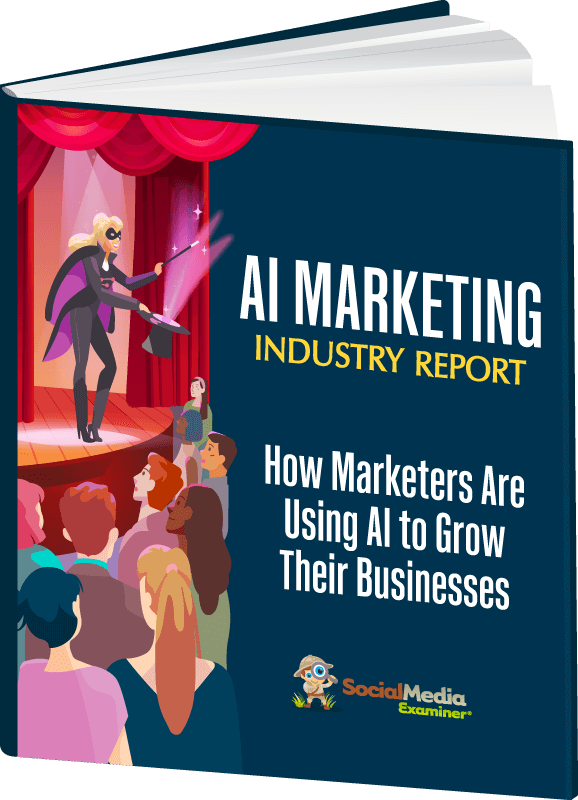
Marketers are rapidly adopting AI to transform their work. Our new 2025 AI Marketing Industry Report surveyed over 730 marketers to reveal the tools, tactics, and trends shaping the industry, including
🔥 90% of marketers save time with AI—discover the top use cases
🔥 The 5 biggest challenges marketers face with AI and how to overcome them
GET THE AI MARKETING INDUSTRY REPORT
